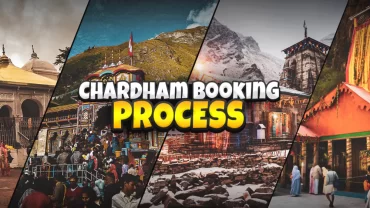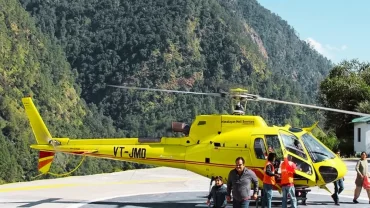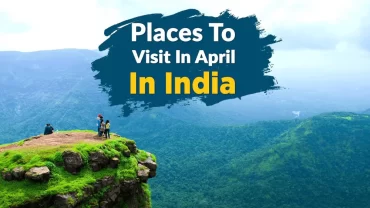Nagaland is a beautiful state in Northeast India. It is known for its vibrant culture and colorful festivals. The people of Nagaland celebrate many traditional festivals throughout the year. These festivals bring joy and togetherness. They also honor the rich heritage of the Naga tribes. Most festivals are related to agriculture, as farming is a major occupation. People sing, dance, and perform rituals to thank nature for its blessings. Tourists from around the world visit Nagaland to enjoy these grand celebrations. The festivals show the unity and strong traditions of the Naga people.
List of the 9 Festivals of Nagaland
- Hornbill Festival
- Sekrenyi Festival
- Moatsu Festival
- Tokhu Emong
- Tuluni Festival
- Aoling Festival
- Mimkut Festival
- Naknyulem Festival
- Tsukheneye Festival
1. Hornbill Festival
The Hornbill Festival is the most famous in Nagaland. It takes place in December every year in Kohima. The Government of Nagaland started this festival in 2000 to promote the culture of the Naga tribes. People from different tribes come together to celebrate. They wear traditional clothes, perform folk dances, and play tribal music. Many stalls sell handmade crafts, jewelry, and delicious Naga food. The festival also has competitions like wrestling, archery, and motor rallies. Rock bands from different places perform at night. The Hornbill Festival is a great time for tourists to experience the beauty of Naga traditions.
2. Sekrenyi Festival
Sekrenyi Festival is an important festival of the Angami tribe. It is celebrated in February every year. This festival marks the beginning of the new year and the purification of the soul. The celebration lasts for ten days. The rituals start with the men cleaning themselves in a special well. After this, they perform ceremonies to remove bad luck. Young boys and girls wear traditional dresses and take part in dances. The festival also includes feasting, singing, and community gatherings. People believe that Sekrenyi brings peace and happiness to the whole tribe. Visitors can enjoy the traditional lifestyle of the Angami people during this festival.
3. Moatsu Festival
The Ao tribe celebrates the Moatsu Festival in May. It is a festival of joy and relaxation. After hard work in the fields, farmers take a break and celebrate this festival. The festival lasts for three days. People light bonfires and sit around them, sharing stories and experiences. Men and women wear colorful clothes and perform energetic dances. They also organize games and competitions. A unique part of this festival is the warrior dance, which shows the bravery of the Ao people. Delicious food and rice beer are shared with everyone. Moatsu Festival is a great time for the community to bond and enjoy together.
4. Tokhu Emong
Tokhu Emong is a harvest festival of the Lotha tribe. It is celebrated in November every year. People thank nature for a good harvest and pray for future prosperity. The festival lasts for nine days. Villagers decorate their homes with colorful flowers and banana leaves. Families cook traditional dishes and share meals with neighbors. Elders bless the younger generation with wisdom and guidance. Traditional games and dance performances take place in the villages. One special ritual is the exchange of gifts between families. Tokhu Emong strengthens relationships and spreads happiness among the people.
5. Tuluni Festival
The Tuluni Festival is a special festival of the Sumi tribe. It is celebrated in July to mark the arrival of the monsoon season. This festival is important because it represents unity and friendship. Families and relatives gather to share food and drinks. One of the main attractions of Tuluni is the grand feast. People prepare different traditional dishes, and rice beer is served in bamboo cups. Young boys and girls participate in folk dances and songs. The festival also includes community prayers for good health and prosperity. Tuluni is a time of joy and celebration for the Sumi people.
6. Aoling Festival
The Aoling Festival is the biggest festival of the Konyak tribe. It takes place in the first week of April. This festival welcomes the spring season and celebrates new life. It lasts for six days. On the first few days, people clean their homes and prepare traditional dishes. They wear colorful dresses and decorate their houses with flowers. The Konyak men perform war dances, showing their strength and bravery. The festival also includes animal sacrifices and prayers for a good harvest. Tourists love to visit Nagaland during the Aoling Festival to witness the unique traditions of the Konyak people.
7. Mimkut Festival
The Mimkut Festival is celebrated by the Kuki tribe in January. It is a festival of harvest and gratitude. People thank the gods for a successful farming season and pray for another good year. The festival is filled with cultural activities. Families cook traditional dishes and invite friends and relatives to join the feast. There are music performances, storytelling sessions, and dance competitions. People also offer food and drinks to the spirits of their ancestors. The festival teaches young people about their cultural heritage. Mimkut Festival is a time of happiness and sharing for the Kuki community.
8. Naknyulem Festival
Naknyulem is an important festival of the Chang tribe. It is celebrated in July with great enthusiasm. The festival focuses on joy, unity, and traditions. People organize wrestling matches, singing competitions, and tug-of-war games. Traditional Naga drums and bamboo flutes fill the air with music. Families prepare delicious food, and everyone enjoys the grand feast. The festival also includes storytelling sessions where elders share the history of their tribe. The exchange of gifts and greetings is an important part of Naknyulem. It strengthens relationships and spreads happiness among the people. Visitors can experience the warmth and hospitality of the Chang tribe during this festival.
9. Tsukheneye Festival
The Tsukheneye Festival is a famous festival of the Chakhesang tribe. It is celebrated in March every year. This festival marks the beginning of the new farming season. People clean their fields and pray for a good harvest. Young boys and girls dress in traditional clothes and perform folk dances. The festival also includes rituals for good health and protection from evil spirits. Wrestling matches and other sports events take place in the village. Families cook traditional dishes and invite friends to share meals. The Tsukheneye Festival is a time of hope and new beginnings for the Chakhesang people.
Final Word
Nagaland is a land of festivals. Each festival has its charm and significance. These celebrations bring people together and keep their traditions alive. The music, dances, and rituals show the rich culture of the Naga tribes. Tourists love visiting Nagaland during festival times to experience its vibrant culture. The festivals not only celebrate nature and harvest but also promote unity and happiness. If you love culture and traditions, Nagaland’s festivals are a must-see. They offer a glimpse into the joyful and colorful life of the Naga people.
Frequently Asked Questions (FAQs)
Q1. When Is The Hornbill Festival Celebrated?
Ans. The Hornbill Festival is celebrated in December every year in Kohima.
Q2. Which Tribe Celebrates The Moatsu Festival?
Ans. The Ao tribe celebrates the Moatsu Festival in May.
Q3. What Is The Main Attraction Of The Aoling Festival?
Ans. The main attraction of the Aoling Festival is the war dance performed by the Konyak men.
Q4. Why Is The Tokhu Emong Festival Important?
Ans. The Tokhu Emong festival is important because it celebrates the harvest and strengthens relationships.
Q5. Which Festival Marks The Beginning Of The Farming Season?
Ans. The Tsukheneye Festival marks the beginning of the farming season.




Comment (0)